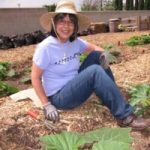Purchasing food items for personal use can quickly add up, especially when it comes to fresh produce. By growing your own vegetable garden, you can significantly reduce your grocery bill. With careful planning and proper cultivation techniques, you can enjoy a bountiful harvest of homegrown vegetables without spending a fortune.
Growing your own vegetable garden ensures that you have access to fresh and nutritious produce. Supermarket vegetables may spend days or even weeks in transit, losing their nutritional value along the way. When you grow your own vegetables, you have the opportunity to harvest them at their peak ripeness, guaranteeing maximum taste and nutritional content.
Growing your own vegetable garden allows you to connect with nature and the food you eat. There is something truly rewarding about planting a seed, nurturing it, and then harvesting the fruits of your labor.
Growing your own vegetable garden also promotes sustainability and helps reduce food waste. When you grow your own vegetables, you have full control over the cultivation process, from choosing organic seeds to using natural fertilizers and pest control methods. This means you can avoid harmful chemicals and reduce your environmental impact.
When planning your vegetable garden, it’s important to assess the available space and the amount of sunlight it receives. Most vegetables thrive in full sun, which is defined as at least six hours of direct sunlight per day. Take note of any trees or structures that may cast shadows over your garden area and adjust your plant selection accordingly.
This is an essential step in creating a successful vegetable garden. The size of your garden will depend on the available space you have, how many vegetables you want to grow, and the amount of time and effort you are willing to invest.
It is important to consider your personal preferences and the climate in which you live. Planting vegetables that you and your family enjoy eating will make the gardening experience more enjoyable and rewarding.
Testing the soil pH and nutrient levels is an important step in preparing your vegetable garden. This will help you determine the condition of your soil and what amendments might be needed to optimize plant growth.
This is essential for creating a fertile and nutrient-rich environment for your vegetable garden. Compost is a valuable resource made from decomposed organic matter such as kitchen scraps, yard waste, and livestock manure. It enriches the soil by providing essential nutrients, improving soil structure, and promoting beneficial microbial activity.
Understanding your soil is crucial for ensuring optimal plant growth in your vegetable garden. Here are some tips to address these issues effectively:
You will need to ensure proper drainage and aeration for healthy plant growth. This is crucial for healthy plant growth. Excess water in the soil can lead to root rot and other plant diseases, while poor aeration can result in oxygen deficiency and stunted growth. Here are some tips to ensure optimal drainage and aeration in your garden:
Understanding the different types of seeds is essential when starting your vegetable garden. There are three main types of seeds: open-pollinated, hybrid, and heirloom.
This is an important step in starting your vegetable garden. The method you choose will depend on factors such as the type of vegetable, your local climate, and the available space in your garden.
This is the next step in growing your vegetable garden. Here’s how to do it effectively: Properly spacing and planting seeds or seedlings is crucial for optimal growth and maximizing the yield of your vegetable garden.
Determining the water requirements for different vegetables is essential for their healthy growth and productivity. While all plants need water the amount and frequency of watering can vary depending on the specific vegetable. Here are some general guidelines to help you determine the water needs of popular vegetables:
This is necessary for maintaining the health and productivity of your vegetable garden. Water is essential for plant growth, nutrient uptake, and photosynthesis. Here are some tips on how to establish a watering schedule for your vegetable garden:
This or other efficient watering methods is a great way to save water and ensure that your vegetable garden gets the proper amounts of moisture it needs. Here are some methods to consider:
One of the key factors in growing a successful vegetable garden is ensuring that your plants receive the necessary nutrients. Instead of relying on synthetic fertilizers, which can be harmful to the environment and potentially affect the taste and quality of your vegetables, consider using organic fertilizers or compost.
Identifying common insect pests and diseases in vegetable gardens Identifying and managing common insect pests and diseases in your vegetable garden is crucial to ensure the health and productivity of your plants.
This can help minimize the risk of pests and diseases, ensuring the success of your crops. Here are some effective strategies to consider:
This is not only safer for the environment but also for your health. It eliminates the need for harmful chemicals that can potentially contaminate your vegetables.

Urban Container Vegetable Gardens
8 Week Class
Hands On

Nonprofit Community Food Gardens
8 Week Class
Hands On

Nonprofit Care of Food Gardens
8 Week Class
Hands On

Village Vegetable Gardens
8 Week Class
Hands On

Climate Smart Agricultural Program
8 Week Class
Hands On
Copyright © 2008-2024, Center for Sustainable Development, Inc. All rights reserved. CSDi is a U.S. registered 501(c)(3) nonprofit organization that specializes in providing sound, evidence-based information, tools and training for climate change and sustainable development for development and nonprofit professionals worldwide. Visit our training catalogue.